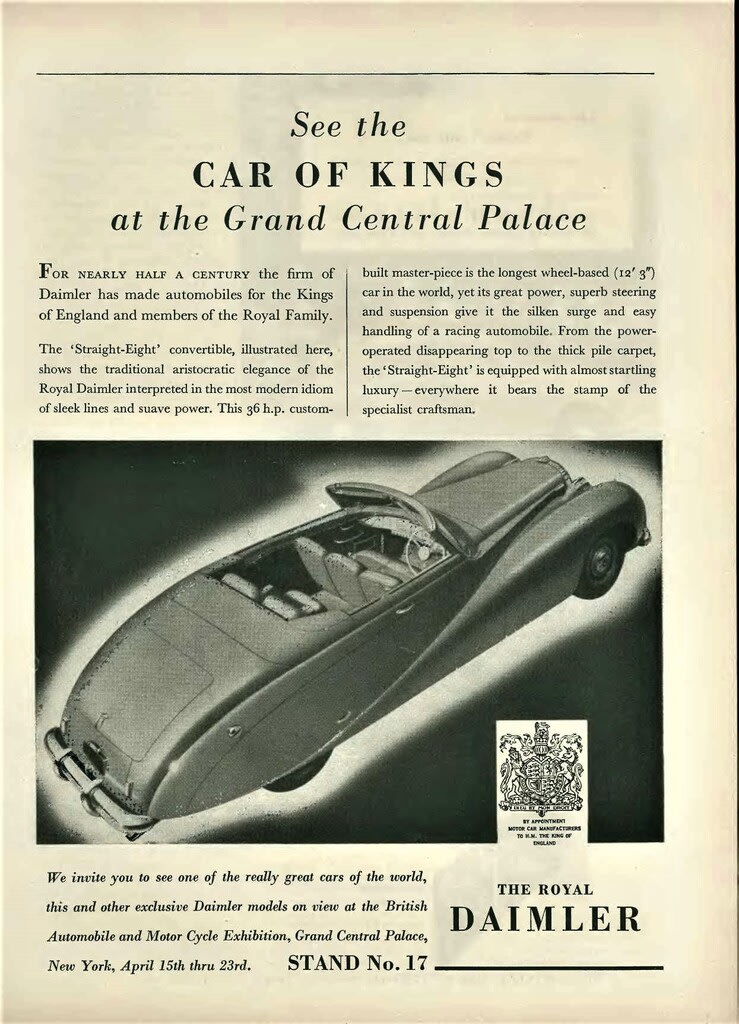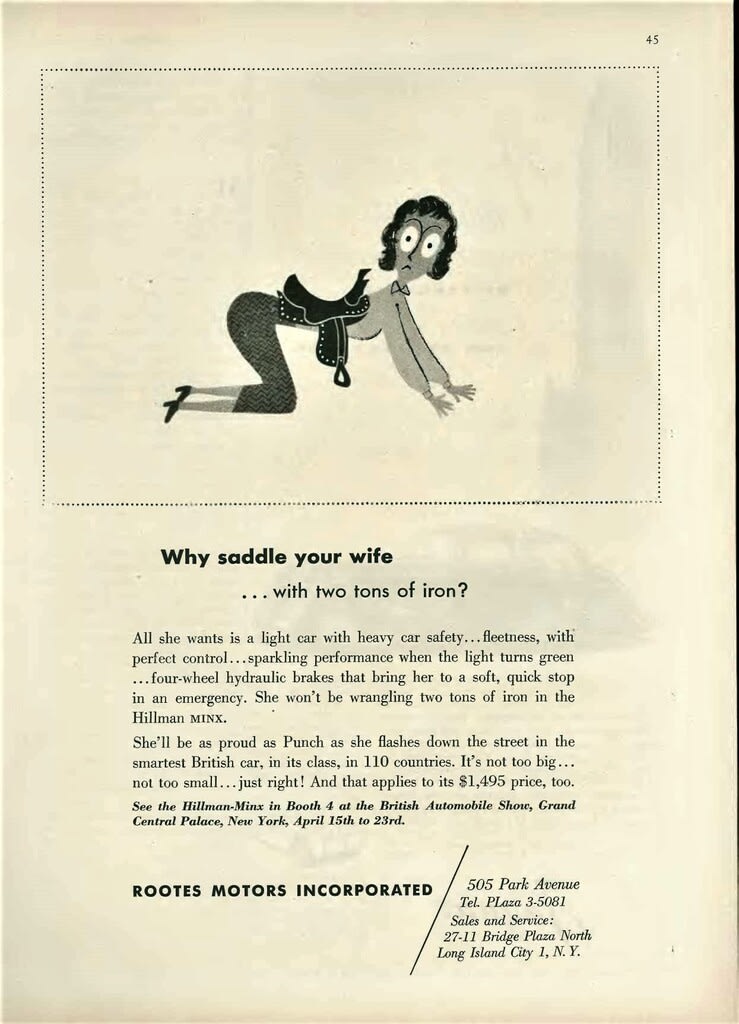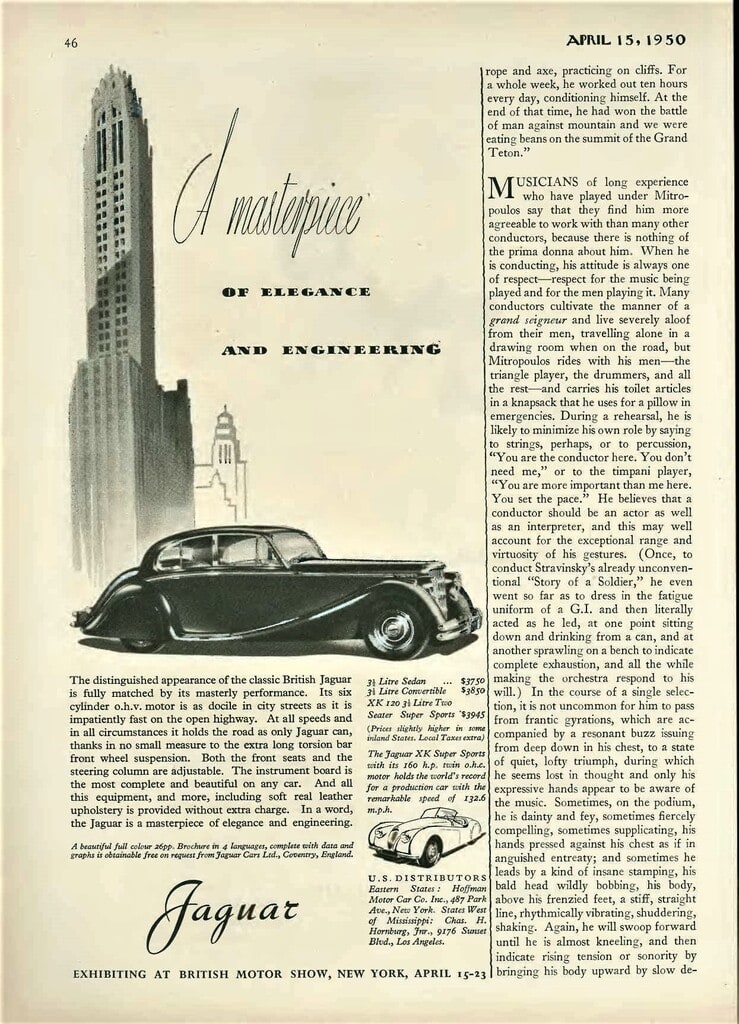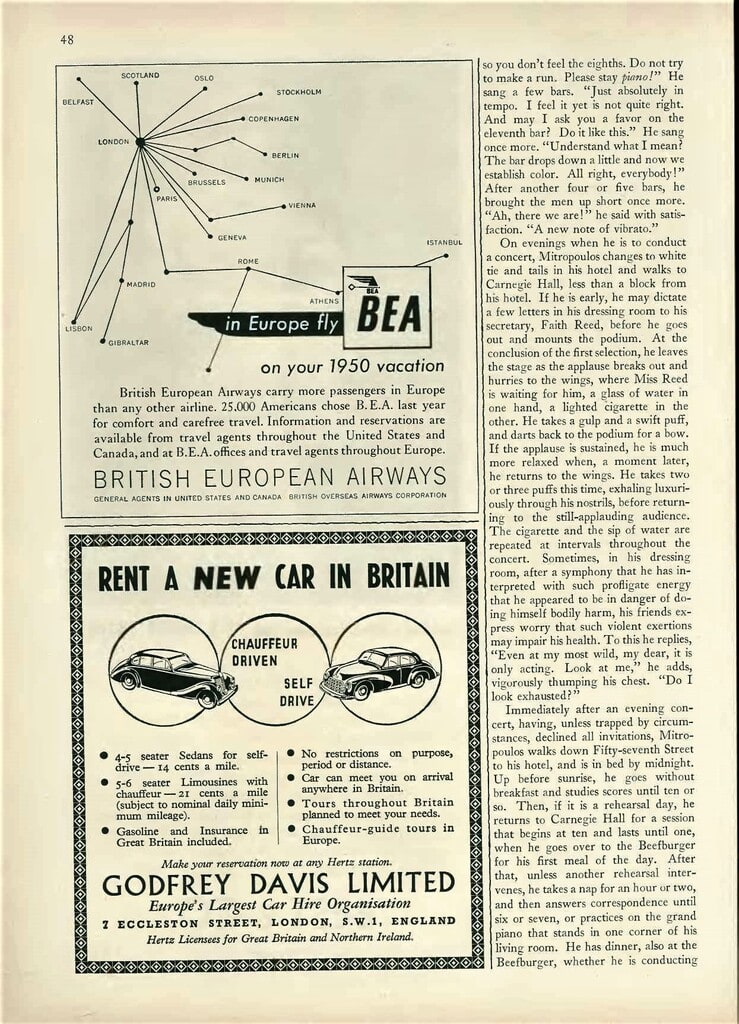Bookshelf
Isaac Stern: A Virtuoso in Perpetual Motion
Cultural diplomacy, kindness toward young talent, a vast celebrity acquaintance, the rescue of Carnegie Hall—and music.
By Norman Lebrecht
June 19, 2020 6:10 pm ET
The Lives of Isaac Stern
By David Schoenbaum
Norton, 220 pages, $26.95
The Nightingale’s Sonata
By Thomas Wolf
Pegasus, 375 pages, $29.95
The jury’s still out on Isaac Stern. America’s highest paid violinist and politically the most powerful during his lifetime, Stern (who died in 2001, at age 81) is credited with saving Carnegie Hall from the wrecking ball and being the first American musician to tour in China. As reward for his efforts, he got his name up in perpetuity on Carnegie’s main auditorium and an international violin competition in Shanghai.
The memory of a great violinist tends to fade in a generation. Yet Stern’s footprint in history just seems to grow and grow, without anyone being prepared to swear that he belongs among the greats. The competition in his time was, let me remind you, tough. Jascha Heifetz, Stern once said, played 10% better than anyone else; Nathan Milstein was twice as elegant, Yehudi Menuhin a pained wearer of the world’s woes, David Oistrakh impeccable, Ida Haendel irresistible, Ivry Gitlis more Jewish—and violinists in those days were all Jewish. Yet Stern, alone among them, has his name on the hall of eternal fame, his plaque almost as big as Andrew Carnegie’s.
A Stern biography is more than timely ahead of his centenary next year, if only to set his musical life in the context of his extraneous activities, which included ceaseless advocacy for the state of Israel, cultural diplomacy with Russia, an ice-breaking China tour and vast generosity toward talents of many sorts, among them Yo-Yo Ma, Emanuel Ax, Itzhak Perlman and Midori. A 1999 memoir, “My First 79 Years,” amounted to no more than an unprobing conversation with his friend, the novelist Chaim Potok.
The new work is “The Lives of Isaac Stern,” by David Schoenbaum, a retired University of Iowa history professor and an amateur violinist with an intimate knowledge of the politics of stringed instruments, the dodgy pedigrees and backroom deals that fuel a nebulous market. The rear cover shows Stern in earnest conversation at the White House, a full head shorter than President Kennedy but holding the first lady in rapt attention. Isaac Stern could really mesmerize.
He grew up in an immigrant family in San Francisco, four years behind Menuhin, who studied there with Louis Persinger and made his debut with the San Francisco Symphony at age 7. Isaac distanced himself in identity terms from Yehudi, who used every circumlocution to avoid saying the word “Jew.” Stern was out and proud all his life. “The whole Jewish thing was part of a breakout from the ghetto,” he told Potok. Russian was the language at home, not Yiddish; an ambitious mother sent him out to learn French.
He hit the U.S. circuit in his late teens, and good wartime notices got him 90 concerts a year by 1947, worth around $100,000—roughly $1.1 million in today’s money. Mr. Schoenbaum reckons that he earned $60,000 for playing four Beethoven concertos with the Chicago Symphony in the 1990s, another top amount; I clearly remember him getting $40,000 around that time for just one Beethoven performance, which worked out to around two grand a minute. No player on earth could command such fees, but Stern by then was a major player in the music business, represented by the ICM showbiz agency, whose classical division existed chiefly to serve himself and his protégés. His circle became known as the Stern Gang, after a Zionist terror group; no less fearsomely, they were called the Kosher Nostra.
Stern flew to Israel so often that he featured in El Al airline ads. In 1951 he was the first American violinist to tour the Soviet Union, coining a cute aphorism when David Oistrakh came to America: “They send us their Jews from Odessa, we send them ours.” His post-Nixon trip to China, in 1979, drew post-Mao kids to Western classics and yielded an Oscar-winning documentary. France gave him the Légion d’honneur, Sweden the Polar Music Prize. The only country he shunned was Germany, unable to forgive the Holocaust, though he embraced German musicians of a younger generation.
Capable of great charm when he cared to turn it on, Stern was friendly with just about every celebrated figure of his time, from Charlie Chaplin and Marc Chagall to Ronald Reagan and Leonard Bernstein. Musicians who irked him, like the violinist Aaron Rosand, claimed that Stern used music-biz muscle to blight their careers. A journalist who spent many weeks interviewing Stern and others for a 60th-birthday magazine feature in the New York Times found that, after initial editorial enthusiasm, the piece was shredded sentence by sentence on orders from above, possibly from executive editor Abe Rosenthal, a pal of Isaac’s. One of the few sharp phrases in the piece that made it into print was: “Isaac Stern, in proposing things, tries his usually infallible charm first and, if it doesn’t succeed, tries to ram them through.”
Sadly, Mr. Schoenbaum ignores Stern’s abundant love of power and gleeful use of it. There is also scant mention of his three wives and one horrendous divorce, or of a passion for trading that would find him on the phone to his broker in the interval of a major recital. Much in the biography feels sanitized.
Which is a real loss, since a full portrait that showed Stern in full cry would show how a soloist enslaved to hours of daily practice could rise above his scales to leave a lasting mark on the landscape. His moment came in 1957 when, hearing that a developer planned to replace Carnegie Hall with an office block, Stern galvanized his celebrity contacts and wealthy admirers into a Citizens‘ Committee to save the hall, resulting in its purchase by the City of New York and its 1960 leaseback to an independent body. At a Carnegie concert, amid ovations, Bernstein whispered to him: “Isn’t it wonderful to be young and famous?”
How good a violinist was he? It’s hard to judge definitively, since Columbia’s 30th Street Studio sound was harsh and Stern doesn’t gleam on record as Milstein and Oistrakh did. When I heard him, at 70, a lifelong toll of 150 concerts a year had left the mind weary and the hands weak, resulting in the feeblest Beethoven I ever encountered. But the concertos he premiered by Bernstein, Penderecki, Henri Dutilleux and Peter Maxwell Davies testify both to brilliant technique and restless aspiration, challenging composers to give him tough passages and appeasing the public ear with a silken interpretation. He was the paramount performer of Bernstein’s “Serenade.” More than any hall, he wanted to be remembered for the music he brought into being. He was immersed, first and foremost, in violin craft.
To glimpse the full force of Isaac Stern you’ll need to read deep into “The Nightingale’s Sonata,” a chronicle of author Thomas Wolf’s effort to pursue the traces of his grandmother Lea Luboshutz, an Odessa-born violinist who became a mainstay of the Curtis Institute in Philadelphia. Lea was unusual in many ways, not least her feminist independence. In her teens, Mr. Wolf tells us, she took up with a married lawyer in Moscow and got to know the musical elite. With her brother and sister, she played trios at Leo Tolstoy’s funeral. After the Russian Revolution she toured Europe and America with the likes of Josef Hofmann and Sergei Prokofiev, giving the New York premiere of Prokofiev’s first violin concerto. Mr. Wolf touches upon lovers taken and, with scant regret, discarded. I was gripped by her single-mother resourcefulness and eye for the main chance. Born out of wedlock, her son Boris Goldovsky became a prolific American opera producer. Two grandsons were raised as musicians while Lea taught half the front desk of the Philadelphia Orchestra.
The story suddenly leaps off the page when the author’s brother, Andrew Wolf, who was Isaac Stern’s piano accompanist, is diagnosed with a brain tumor on the eve of an important tour and a recording of the César Franck sonata. Most violinists would have hired another pianist. Not Stern: “Amazingly, he took it as a challenge,” Mr. Wolf writes. “Andy was going to get treatment and he was going to get better, he insisted. He just needed motivation. . . . Stern had a piano moved into Andy’s room at a residence hotel in Bethesda. Andy was in treatment during certain hours. During the rest of the day, he should practice. Stern visited during the summer, and they rehearsed. With this generous act, one of the greatest living violinists had given Andy and all of us a great gift—the gift of confidence and hope.” That was Isaac Stern: The personal always transcended the political.
—Mr. Lebrecht’s recent book, “Genius and Anxiety,” will appear in paperback in December.

(機械翻訳)

(機械翻訳)
本棚
アイザック・スターン:永遠の動きの名手
文化外交、若い才能への優しさ、有名人の知人の多い人たち、カーネギーホールの救出、音楽。
ノーマン・レブレヒト著
2020年6月19日 18:10 米国
アイザック・スターンの生涯
デビッド・シェーンバウム著
ノートン、220ページ、$26.95
ナイチンゲールのソナタ
トーマス・ウルフ 著
ペガサス, 375 ページ, $29.95
陪審員はまだアイザック・スターンに出て行く。アメリカで最も高給取りのバイオリニストであり、政治的に彼の生涯の中で最も強力な、スターン(2001年に81歳で死亡した)は、難破ボールからカーネギーホールを救い、中国でツアーする最初のアメリカのミュージシャンであると信じられています。彼の努力の報酬として、彼はカーネギーのメインオーディトリアムと上海での国際バイオリンコンペティションで永久に彼の名前を得ました。
偉大なバイオリニストの記憶は世代で消えがちです。しかし、スターンの歴史上の足跡は、彼が偉人の中に属していることを誓う準備ができていない、成長し、成長しているようです。彼の時代の競争は、私はあなたに思い出させてください、タフでした。ジャシャ・ハイフェッツは、スターンはかつて誰よりも10%良いプレーをしたと言いました。ネイサン・ミルスタインは2倍優雅で、イェフディ・メヌヒンは世界の苦境の苦しみの苦しみの着用者であり、デビッド・オイストラフは非の打ちどころのない、イダ・ハエンデルはたまらない、象牙・ギトリスよりユダヤ人であり、当時のヴァイオリニストは全員ユダヤ人でした。しかし、スターンは、その中で一人で、永遠の名声の殿堂に彼の名前を持っています, アンドリュー・カーネギーとほぼ同じ大きさの彼のプラーク.
厳格な伝記は、イスラエル国家に対する絶え間ない擁護、ロシアとの文化外交、氷を破る中国ツアー、様々な才能に対する寛大さを含む彼の無関係な活動の文脈で彼の音楽生活を設定するだけであれば、来年の100周年を前にしています。1999年の回顧録「私の最初の79年」は、彼の友人、小説家チャイム・ポトックとの不均衡な会話に過ぎませんでした。
新作は、Schoenbaumアイオワ大学の歴史教授でアマチュアバイオリニストのデビッド・シェーンバウムが、弦楽器の政治、厄介な血統、ネビュラスな市場をあおるバックルーム取引に関する親密な知識を持つ「アイザック・スターンの生涯」です。後表紙には、ホワイトハウスでのスターンの真剣な会話が、ケネディ大統領より短いが、ファーストレディーを猛烈な注目を集めている様子が映っている。アイザック・スターンは本当に魅惑的な可能性があります。
彼はルイ・ペルジンガーと一緒にそこで学び、7歳でサンフランシスコ交響楽団でデビューしたメヌヒンの4年後のサンフランシスコの移民家庭で育ちました。アイザックは、「ユダヤ人」という言葉を言わないようにあらゆる割礼を使用したイェフディからアイデンティティの言葉で距離を置きました。スターンは外出していて、彼の人生のすべてを誇りに思っていました。「ユダヤ人全体がゲットーからのブレイクアウトの一部でした」と、彼はポトックに話しました。ロシア語はイディッシュ語ではなく、自宅での言語でした。野心的な母親がフランス語を学ぶために彼を送り出した。
彼は10代後半にアメリカのサーキットを襲い、戦時中の良い通知は1947年までに年間90回のコンサートを受け、約10万ドルの価値があり、今日のお金で約110万ドルでした。シェーンバウム氏は、1990年代にシカゴ交響楽団とベートーヴェン協奏曲4回を演奏したことで6万ドルを稼いだと考えている。私は明らかに彼が1分に約2壮大に働いたちょうど1ベートーヴェンのパフォーマンスのためにその頃に$40,000を得たことを覚えています。地球上のプレイヤーはそのような手数料を指揮することはできませんでしたが、スターンはそれまでにICM芸能界の代理店に代表される音楽ビジネスの主要なプレーヤーであり、その古典的な部門は主に自分自身と彼のプロテジェに仕えるために存在していました。彼のサークルは、シオニストのテロ集団の後、スターンギャングとして知られるようになりました。恐れ知らずのうちに、彼らはコーシャー・ノストラと呼ばれた。
スターンは頻繁にイスラエルに飛んだので、彼はエルアル航空の広告で取り上げられました。1951年、彼はアメリカのヴァイオリニストとして初めてソ連をツアーし、デビッド・オイストラフがアメリカに来たときにかわいい格言を作りました:「彼らは私たちにオデッサからユダヤ人を送り、私たちは彼らに私たちを送ります。” 「1979年のニクソン後の中国旅行は、ポスト毛沢東の子供たちを西洋の古典に引き寄べ、アカデミー賞を受賞したドキュメンタリーを生み出しました。フランスは彼にレジオン・ドヌール、スウェーデンの極地音楽賞を与えました。彼が敬遠した唯一の国はドイツで、ホロコーストを許すことができませんでしたが、彼は若い世代のドイツのミュージシャンを受け入れました。
彼がそれをオンにすることを気にしたとき、偉大な魅力が可能なスターンは、チャーリー・チャップリンとマーク・シャガールからロナルド・レーガンとレナード・バーンスタインまで、彼の時代のほぼすべての有名な人物と友好的でした。ヴァイオリニストのアーロン・ロザンドのように、彼を刺激したミュージシャンは、スターンが彼らのキャリアを傷つけるために音楽ビズの筋肉を使用したと主張しました。ニューヨーク・タイムズ紙の60歳の誕生日雑誌特集でスターンや他の人々にインタビューするために何週間も費やしたジャーナリストは、最初の編集の熱意の後、この作品は、おそらくエグゼクティブ・エディターの安倍ローゼンタール(アイザックの仲間)からの上からの命令で文章で細断されたことを発見しました。印刷物にした作品の中で数少ない鋭いフレーズの一つは、「アイザック・スターンは、物事を提案する際に、彼の通常の絶対的な魅力を最初に試み、それが成功しない場合は、それらを突っ込もうとします」でした。
悲しいことに、シェーンバウム氏はスターンの豊富な権力愛と優雅な使い込みを無視している。また、彼の3人の妻と1人の恐ろしい離婚、または主要なリサイタルの間隔で彼をブローカーに電話で見つける取引への情熱についても言及されています。伝記の多くは消毒感を感じています。
スターンを完全な叫び声で示した完全な肖像画は、毎日の練習の時間に奴隷にされたソリストが風景に永続的なマークを残すために彼のスケールの上に上昇する方法を示すので、これは本当の損失です。彼の瞬間は、1957年に、開発者がカーネギーホールをオフィスブロックに置き換えることを計画していると聞いて、スターンは彼の有名人の連絡先と裕福な崇拝者を市民委員会に亜鉛めっきしてホールを救い、その結果、ニューヨーク市と1960年のリースバックによって独立した機関に購入しました。カーネギーのコンサートで、ベルンスタインはオベーションの中で彼にささやきました:「若くて有名になることは素晴らしいことではありませんか?
彼はバイオリニストはどのくらい良かったですか?コロンビアの30丁目スタジオのサウンドは厳しく、スターンはミルスタインとオイストラフのように記録に輝いていないので、決定的に判断するのは難しいです。彼の話を聞いたとき、70歳のとき、年間150回のコンサートの生涯にわたる通行料が心を疲れさせ、手が弱く、私が今まで遭遇した中で最も弱いベートーヴェンをもたらしました。しかし、バーンスタイン、ペンデレッキ、アンリ・デュティルー、ピーター・マクスウェル・デイヴィスが初演した協奏曲は、華麗なテクニックと落ち着きのない願望の両方を証言し、作曲家に厳しい通路を与え、絹のような解釈で世間の耳を魅了しています。彼はバーンスタインの「セレナーデ」の最も重要なパフォーマーでした。どのホールよりも、彼は彼が生み出した音楽のために記憶されたかった。彼は何よりもまずバイオリンの工芸品に没頭していた。
アイザック・スターンの全力を垣間見るためには、フィラデルフィアのカーティス研究所の主力となったオデッサ生まれのヴァイオリニスト、リー・ルボシュッツの足跡を追い求める作家トーマス・ウルフの努力の記録である「ナイチンゲールのソナタ」を深く読む必要があります。リーは、少なくとも彼女のフェミニストの独立ではなく、多くの点で珍しかったです。10代の頃、ウルフ氏はモスクワで既婚の弁護士と一緒に取り上げ、音楽のエリートと知り合ったと言います。兄と妹と一緒に、彼女はレオ・トルストイの葬儀でトリオを演奏しました。ロシア革命後、彼女はヨーゼフ・ホフマンやセルゲイ・プロコフィエフなどと共にヨーロッパとアメリカをツアーし、プロコフィエフ初のヴァイオリン協奏曲のニューヨーク初演を行った。ウルフ氏は、撮影された愛好家に触れ、スキャント後悔で、廃棄されます。私は彼女のシングルマザーの機知と主なチャンスのための目につかまれました。ウェドロックから生まれた息子のボリス・ゴールドフスキーは、アメリカのオペラプロデューサーになりました。2人の孫がミュージシャンとして育ち、リーはフィラデルフィア管弦楽団のフロントの半分を教えました。
アイザック・スターンのピアノ伴奏者だった著者の兄アンドリュー・ウルフが、重要なツアーの前夜に脳腫瘍と診断され、セザール・フランク・ソナタの録音が行われたとき、物語は突然ページから飛び降りる。ほとんどのバイオリニストは別のピアニストを雇ったでしょう。スターンではない:「驚くべきことに、彼はそれを挑戦と受け取りました」とウルフ氏は書いています。アンディは治療を受けるつもりだったし、彼は良くなるだろう、と彼は主張した。彼はただモチベーションが必要だった.スターンはベテスダのレジデンスホテルでアンディの部屋にピアノを移しました。アンディは特定の時間の間に治療を受けました。残りの日の間に、彼は練習する必要があります。スターンは夏の間に訪れ、彼らはリハーサルをしました。この寛大な行為によって、生きている最も偉大なバイオリニストの一人が、アンディと私たち全員に、自信と希望の賜物という大きな贈り物を与えました。それはアイザック・スターンでした:個人は常に政治的を超越しました。
— レブレヒト氏の最近の著書「天才と不安」は、12月に文庫に掲載されます。
‘George Szell The Complete Columbia Album Collection’ Review A Maestro’s Time in Cleveland Still Shines
This 106-CD set assembles almost all of the conductor’s recordings with the Cleveland Orchestra, along with a few Szell made with the New York Philharmonic, the Columbia Symphony Orchestra, and as a remarkably vibrant chamber-music pianist.
By Allan Kozinn
Aug. 22, 2018
When George Szell died, in 1970, he was revered for having built the Cleveland Orchestra into one of the world’s great ensembles in a 24-year tenure that began in 1946, and as an interpreter whose streamlined but high-power readings were rooted in his belief that a composer’s intentions were sacrosanct. But though he played down the Romantic notion that interpretation should also reflect the performer’s personality, Szell’s readings were always identifiable by their structural logic, textural clarity, unerring balances and sheer energy. Under Szell’s baton, an orchestra was a highly polished, precision machine, and in music by Beethoven, Schubert, Brahms, Dvořák and Wagner, he was untouchable.
Yet, at the time of his death, the music world as Szell knew it was hurtling toward obsolescence. One of the last great podium martinets, Szell wielded absolute authority and executed it with severity—an approach that vanished once unions began asserting themselves in matters of how musicians should be treated. Vanished, too, is the kind of devotion Szell showed to the Cleveland Orchestra. These days, a tenure lasting nearly a quarter century is rare; beyond a decade, critics wonder (often abetted by off-the-record carping from the players) whether the relationship is growing stale.
Szell’s, with Cleveland, never did; the chemistry between them consistently yielded both heat and light. Their recordings for the Epic and CBS Masterworks labels, starting in 1947, were exemplary in their day, and they remain so now, a point Sony Classical makes vividly in its 106-CD “George Szell: The Complete Columbia Album Collection,” out now. Except for some live recordings issued by the orchestra itself, all of Szell’s Cleveland recordings are here, along with a few Szell made with the New York Philharmonic, the Columbia Symphony Orchestra, and as a remarkably vibrant chamber-music pianist. The discs are beautifully remastered, and packaged in sleeves that replicate their original artwork and liner notes, with period-correct labels and a hardcover book that provides all the recording details.
Mammoth boxes like this, which have become plentiful lately, are the last gasps of the physical record industry, intent on presenting its wares as they were in their heyday, one last time before streaming blows away the tactile side of music collecting entirely. They are comprehensive, relatively inexpensive (the Szell set can be had for less than $2 a disc) and provide the eerie sense that you are holding the full shape and substance of a great musician’s career in your hands.
The Szell box is a fascinating glimpse at how the supposedly ossified classical canon has evolved (albeit slowly) over the decades. There is, for example, very little Mahler or Bruckner, indispensable staples of a conducting career now. But what there is—most notably, a rich-hued 1966 Mahler Fourth Symphony, and a broad-boned 1970 Bruckner Eighth—stands up well to modern competition. It is also hard to imagine a conductor today recording 106 discs with only a handful devoted to contemporary music and, of that, only a single Stravinsky work, the “Firebird” Suite.
Yet when Szell considered a new work worth recording—for example, a spiky, high-contrast account of Samuel Barber’s Piano Concerto, with John Browning; or taut, colorful performances of Walton’s Partita for Orchestra and Symphony No. 2; or a curious reading of Bartók’s Concerto for Orchestra that begins sedately but eventually explodes from the speaker—he is an eloquent advocate, as focused on detail, balance and the subtleties of color as he is in the great Romantic works.
There are occasional disappointments that have more to do with changing interpretive fashion than with any deficiencies of Szell’s. His Mozart, Haydn and Bach, for example, sound a bit ponderous by today’s standards. And despite his reputation as a literalist, he often jettisoned exposition repeats, arguing in interviews (several are included in the set) that repeats were necessary only when works were new and audiences were unfamiliar with them.
Szell’s specialty was the Romantic repertory. His Beethoven and Brahms Symphonies remain among the most tightly reasoned and precisely executed on the market, and his collaborations on those composers’ piano concertos, with Leon Fleisher, are still the gold standard. It’s not easy to find a recording that captures the same level of urgency and anxiety Szell brought to Strauss’s “Death and Transfiguration,” and his Wagner Overtures are truly regal. Even pieces that, today, are typically curtain-raisers or encores—Rossini Overtures, the Dvořák “Slavonic Dances”—have an uncommon intensity that makes them sound like major statements.
Lately, the sweep of reductive history has elevated Arturo Toscanini, Leonard Bernstein and Herbert von Karajan to almost mythic status, leaving the other great conductors of the 20th century as footnotes that only specialist collectors care about. That’s not how it seemed at the time, of course. And the new Sony box is a reminder, disc for disc, that Szell deserves a place in that pantheon.
—Mr. Kozinn writes about music for the Journal.
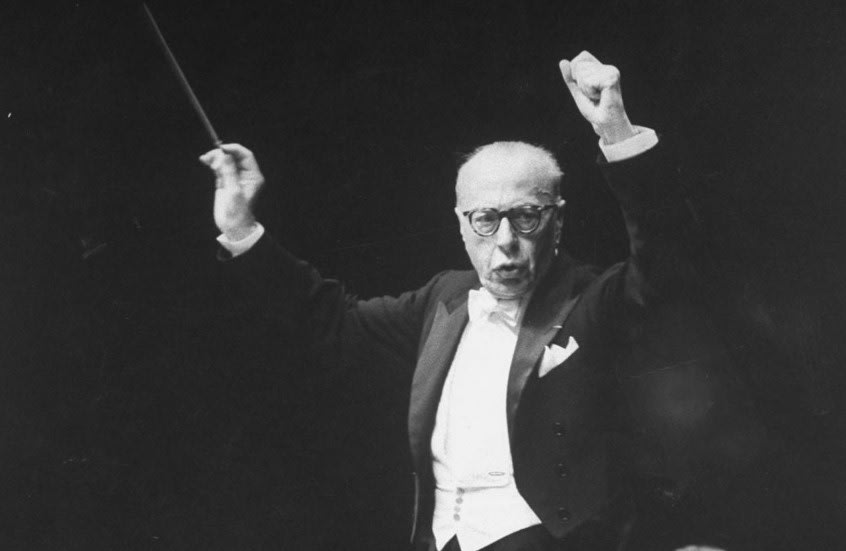
(機械翻訳)

(機械翻訳)
「ジョージ・ゼル・ザ・コンプリート・コロンビア・アルバム・コレクション」レビュー・ア・マエストロの時間
この106枚のCDセットは、指揮者の録音のほとんどすべてをクリーブランド管弦楽団と組み合わせて、ニューヨーク・フィルハーモニー管弦楽団、コロンビア交響楽団、そして非常に活気に満ちた室内楽ピアニストとして作られたいくつかのゼルと一緒に組み立てます。
アラン・コジン 著
2018年8月22日
ジョージ・ゼルが亡くなったとき、1970年にクリーブランド管弦楽団を1946年に始まった24年間の在任中に世界の偉大なアンサンブルの一つに組み込み、合理化されたが高出力の読書が作曲家の意図はサクロサンクトであるという彼の信念に根ざした通訳として尊敬されました。しかし、彼は解釈もパフォーマーの性格を反映すべきであるというロマンチックな考えを演じたが、Szellの読書は常に彼らの構造的論理、テクスチャの明快さ、絶え間ないバランスと完全なエネルギーによって識別可能でした。ゼルのバトンの下では、オーケストラは非常に洗練された精密なマシンであり、ベートーヴェン、シューベルト、ブラームス、ドヴォルザーク、ワーグナーの音楽では、彼は手つかずでした。
しかし、彼の死の時、Szellとしての音楽の世界は、それが陳腐化に向かって傷ついていることを知っていました。最後の偉大な表彰台のマルティネットの一つであるSzellは絶対的な権威を振り回し、重症度でそれを実行しました。消えたのも、Szellがクリーブランド管弦楽団に見せたような献身です。最近では、四半世紀近く続くテニュアはまれです。10年を超えて、批評家は関係が古くなっているかどうか疑問に思う(多くの場合、選手からのオフレコードカーピングによって賭け)。
ゼルは、クリーブランドと一緒に、決してしませんでした。それらの間の化学は一貫して熱と光の両方を生み出した。1947年から始まったエピックとCBSマスターワークスのレーベルの録音は、その日の模範的なもので、ソニー・クラシックが106枚のCD「ジョージ・ゼル:完全なコロンビア・アルバム・コレクション」で生き生きと作るポイントです。オーケストラ自身が発行したライブ録音を除いて、ゼルのクリーブランドの録音はすべて、ニューヨーク・フィルハーモニー管弦楽団、コロンビア交響楽団、そして非常に活気に満ちた室内楽ピアニストとして作られたいくつかのゼルと一緒にここにあります。ディスクは美しくリマスターされ、オリジナルのアートワークとライナーノートを再現した袖にパッケージ化され、期間正しいラベルとすべての録音の詳細を提供するハードカバーブックが付いています。
最近豊富になったこのようなマンモスボックスは、物理的なレコード業界の最後のギャップであり、ストリーミングが完全に収集する音楽の触覚的側面を吹き飛ばす前に、最後に、彼らが全盛期にあったように、その製品を提示することを意図しています。彼らは包括的で、比較的安価です(Szellセットは2ドル未満のディスクを持つことができます)、あなたの手に偉大なミュージシャンのキャリアの完全な形と実体を保持しているという不気味な感覚を提供します。
Szellボックスは、おそらく化光された古典的なカノンが何十年にもわたって(ゆっくりと)進化した方法を垣間見ることができます。例えば、マーラーやブルックナーは、今や指揮キャリアの不可欠な定番です。しかし、特に、豊かな色合いのマーラー第4交響曲と広い骨の1970年ブルックナー第8交響曲は、現代の競争によく立ち向かっています。また、現代音楽に専念するほんの一握りのディスクを収録し、その中でストラヴィンスキーの作品を1つだけ「ファイアバード」スイートで録音している指揮者を想像するのは難しいです。
しかし、ゼルが録音する価値のある新作を考えたとき、例えば、サミュエル・バーバーのピアノ協奏曲のスパイキーでハイコントラストな説明、ジョン・ブラウニングとの話。または、ウォルトンのオーケストラと交響曲第2番のためのパルティタのカラフルなパフォーマンス。または、コルトークのオーケストラのための協奏曲の好奇心旺盛な読書は、落ち着いて始まるが、最終的にはスピーカーから爆発する - 彼は偉大なロマンチックな作品のように、細部、バランスと色の機微に焦点を当てた雄弁な支持者です。
時折、Szellの欠陥よりも解釈的な方法を変えることと関係のある失望があります。例えば、彼のモーツァルト、ハイドン、バッハは、今日の基準では少し深く考えています。そして、文字通りとしての彼の評判にもかかわらず、彼はしばしば博覧会の繰り返しを突き止め、インタビューで(いくつかのセットに含まれています)、作品が新しく、観客が彼らに慣れていないときにのみ繰り返しが必要であると主張しました。
ゼルの専門はロマンチックなレパートリーでした。彼のベートーヴェンとブラームス交響曲は、市場で最も厳しく推論され、正確に実行され、レオン・フライシャーとの作曲家のピアノ協奏曲に関する彼のコラボレーションはまだゴールドスタンダードです。Szellがシュトラウスの「死と変容」にもたらしたのと同じレベルの緊急性と不安を捉えた録音を見つけるのは簡単ではなく、彼のワーグナー序曲は本当にリーガルです。今日では、カーテンレイザーやアンコールであるロッシーニ序曲、ドヴォルザーク「スラヴォニック・ダンス」は、主要な発言のように聞こえる珍しい強さを持っています。
最近、還元的な歴史の一掃は、アルトゥーロ・トスカーニーニ、レナード・バーンスタイン、ハーバート・フォン・カラヤンをほぼ神話的な地位に引き上げ、20世紀の他の偉大な指揮者を専門家のコレクターだけが気にする脚注として残しています。もちろん、当時はそうは見えませんでした。そして、新しいソニーのボックスは、Szellがそのパンテオンの場所に値することを、ディスクのためのディスクを思い出させるものです。
—コジン氏はジャーナルの音楽について書いています。
A Classical Maven Who Can Really Swing
2017/3/23 By Terry Teachout
Byron Janis, whose specialty was the 19th-century romantics, shows his range on a collection of previously unissued live performances of pieces.
Byron Janis, who turns 89 this week, was one of what Gary Graffman, his colleague and contemporary, called the OYAPs—the great generation of “Outstanding Young American Pianists,” as they were customarily described by journalists, who crowded the concert halls of the world in the years immediately following World War II. Mr. Janis, Vladimir Horowitz ’s first pupil, ranked high among the OYAPs, and to hear the stupendous recordings of Franz Liszt ’s “Totentanz” and Richard Strauss ’s “Burleske” that he made in the ’50s with Fritz Reiner and the Chicago Symphony (both of which are still available on CD) is to be left in no possible doubt of his immense talent. Even after psoriatic arthritis assaulted his hands and temporarily short-circuited his career, Mr. Janis managed to reconstruct his technique and continued to concertize to memorable effect well into the ’90s.
Mr. Janis’s musical interests have long ranged beyond the classics. Out Friday, “Byron Janis Live: On Tour” (Janis Eleven Enterprises), a collection of previously unissued live performances of pieces by Chopin, Haydn and Liszt that were recorded between 1979 and 1999, also includes solo-piano arrangements of several of Mr. Janis’ songs, thus reminding us that he is also a highly accomplished popular songwriter who, among other surprising things, has written the score for a musical version of “The Hunchback of Notre Dame.” Judging from the two resplendently tuneful numbers from the show, “Like Any Man” and “You Are More,” that Mr. Janis plays on “On Tour,” the concert hall’s gain has been Broadway’s loss.
The biggest surprise, however, is the encore, a piano duet called “By and Cy—More Paganini Variations.” On this track, Mr. Janis and Cy Coleman, a classically trained Broadway composer who wrote the score for “Sweet Charity” but started out as a jazz pianist of note, join forces to improvise on Paganini’s A Minor Caprice, the familiar solo-violin piece on which Brahms and Rachmaninoff produced their own sets of variations. Mr. Janis was a celebrated exponent of Rachmaninoff’s Rhapsody on a Theme of Paganini, and he also made an impressively idiomatic recording of George Gershwin ’s “Rhapsody in Blue” in 1953. But to hear him and Coleman blend the two pieces together (so to speak) into what Mr. Janis calls “clazz” is something else again. Taped in 1978 before an audibly delighted audience, “By and Cy” is by turns witty, bluesy, wickedly clever and staggeringly virtuosic.
Time was when most classical musicians steered as far clear of jazz as possible—usually with good reason, too, since few of them had any comprehension of its swinging rhythmic language, which caused them to sound embarrassingly square whenever they essayed such jazz-flavored works as “Rhapsody in Blue.” (If you want a laugh, listen to the way Kurt Masur conducted it with the Leipzig Gewandhaus Orchestra. To call it “stodgy” would be tactful in the extreme.) Nowadays, though, it’s anything but uncommon for classical musicians, especially American-born ones, both to appreciate jazz and to play it well. When I went to Birdland the other night to hear Gary Burton ’s last New York performance, I was pleased but not at all surprised to see Joseph Alessi, the principal trombonist of the New York Philharmonic, stroll up to the bandstand and jam with Mr. Burton on “Bags’ Groove,” a blues by Milt Jackson. You’d never have guessed that he’d been playing John Adams ’s “Harmonielehre” earlier that evening at Lincoln Center.
As for Mr. Janis, he’s been listening to jazz his whole life long, and he and Coleman, who died in 2004, were childhood friends. Nevertheless, he is in no way identified with jazz or popular music: His specialty was the 19th-century romantics, Chopin and Rachmaninoff in particular, and nobody played them better. Neither was Van Cliburn, another OYAP who loved American popular song and who once taped an impromptu version of “You and the Night and the Music” (for which he supplied his own vocals) in the middle of a late-night recording session otherwise devoted to Chopin’s nocturnes. But he never approved it for release, any more than Vladimir Horowitz was willing to record the version of “Tea for Two” that he wrote after hearing Art Tatum play the song at a 52nd Street nightclub. Back then, classical musicians simply didn’t do such things.
Well, now they do, and I congratulate Mr. Janis for allowing us to hear him and Cy Coleman trade choruses on the A Minor Caprice. Tatum he wasn’t, but neither was Coleman: They were themselves, they loved jazz, and it is a joy to be able to hear this five-minute musical souvenir of their long friendship. It reminds me of what Tatum said to the jazz pianist Hampton Hawes when he heard him play in 1956: “Son, you hot.” You hot, too, Mr. Janis.
—Mr. Teachout, the Journal’s drama critic, writes “Sightings,” a column about the arts, every other week. Write to him atメアド

本当にスイングできる古典的なメイブン
2017/3/23 テリー・ティーチアウト
19世紀のロマン派を専門としたバイロン・ジャニスは、未発表のライブパフォーマンスのコレクションに彼の範囲を示しています。
今週89歳になるバイロン・ジャニスは、第二次世界大戦直後に世界のコンサートホールに詰めかけたジャーナリストによって慣習的に述べられたように、同僚で現代のゲイリー・グラフマンがOYAPと呼んだものの一つでした。ウラジーミル・ホロウィッツの最初の弟子であるジャニス氏は、OYAPの中で高くランク付けされ、フランツ・リストの「トタンタンツ」とリチャード・シュトラウスの「バーレスケ」の驚異的な録音を聞くことは、50年代にフリッツ・ライナーとシカゴ交響楽団(どちらもCDで入手可能)と共に作ったもので、彼の才能には間違いありません。乾癬性関節炎が彼の手を暴行し、一時的に彼のキャリアを短絡した後でさえ、ジャニス氏は彼の技術を再構築することができ、90年代によく思い出に残る効果に一致し続けました。
ジャニス氏の音楽的関心は長い間古典を超えて広がってきた。金曜日、ショパンの未発行のライブパフォーマンスのコレクション「バイロン・ジャニス・ライブ:オン・ツアー」(ジャニス・イレブン・エンタープライズ) 1979年から1999年の間に録音されたハイドンとリストには、ジャニス氏の曲のいくつかのソロピアノアレンジも含まれており、彼は他の驚くべきことの中で、ミュージカル版「ノートルダムのハンチバック」の楽譜を書いている非常に熟練した人気ソングライターでもあることを思い出させます。ジャニス氏が「オン・ツアー」で演奏する「ライク・アゲイン・マン」と「あなたはもっといる」の2つの素晴らしく曲がりくねった数字から判断すると、コンサートホールの利益はブロードウェイの損失でした。
しかし、最大の驚きはアンコール、ピアノデュエット「By and Cy - より多くのパガニーニ変奏曲」です。このトラックでは、「スウィート・チャリティー」の楽譜を書いたが、ジャズ・ピアニストとしてスタートした古典的な訓練を受けたブロードウェイの作曲家、ジャニス氏とサイ・コールマンは、ブラームスとラフマニノフが独自のバリエーションを制作したおなじみのソロ・バイオリン作品、パガニーニのマイナー・カプリスを即興で演奏します。ジャニス氏は、パガニーニをテーマにラフマニノフのラプソディの有名な指数であり、1953年にジョージ・ガーシュウィンの「ラプソディ・イン・ブルー」を印象的に慣用的に録音しました。しかし、彼とコールマンがジャニス氏が「クラズ」と呼ぶものに2つの作品をブレンドするのを聞くことは、再び別のものです。聞こえるほど喜んだ聴衆の前に1978年にテーピングされた「By and Cy」は、機知に富み、ブルージーで、邪悪に賢く、驚くほど名手です。
ほとんどのクラシックミュージシャンがジャズを可能な限りはっきりさせた時でした- 通常、理由もあって、彼らのほとんどがその揺れるリズミカルな言葉を理解していたので、彼らは「ラプソディ・イン・ブルー」のようなジャズ風味の作品をエッセイするたびに恥ずかしいほど正方形に聞こえました。(笑いたいなら、カート・マズールがライプツィヒ・ゲワントハウス管弦楽団と一緒に行った方法を聞いてください。それを「ストッジ」と呼ぶには、極端に戦術的であろう。しかし、今日では、クラシックミュージシャン、特にアメリカ生まれのミュージシャンがジャズを鑑賞し、それをうまく演奏することは珍しいことではありません。先日の夜、ゲイリー・バートンの最後のニューヨーク公演を聞くためにバードランドに行ったとき、ニューヨーク・フィルハーモニー管弦楽団の首席トロンジョニストであるジョセフ・アレッシがバンドスタンドまで散歩し、ミルト・ジャクソンのブルース「バッグス・グルーヴ」でバートン氏と一緒にジャムを見て、私は喜んでいましたが、全く驚きではありませんでした。その日の夕方、リンカーン・センターでジョン・アダムスの「ハーモニエレ」を演じているとは思わなかったでしょう。
ジャニス氏に関しては、彼は一生ジャズを聴いてきたが、2004年に亡くなったコールマンとは幼なじみだった。それにもかかわらず、彼はジャズやポピュラー音楽で決して識別されていません:彼の専門は19世紀のロマンチック、特にショパンとラフマニノフであり、誰もそれらをより良く演奏しませんでした。アメリカの人気曲を愛し、かつてショパンの夜の夜の夜のセッションの途中で「あなたと夜と音楽」(彼は自分のボーカルを供給した)の即興バージョンをテーピングしたもう一つのOYAP、ヴァン・クライバーンもではありませんでした。しかし、彼はリリースのためにそれを承認したことはありません, ウラジーミル・ホロウィッツは、彼がアートテイタムが52丁目のナイトクラブで曲を演奏するのを聞いた後に書いた「2のためのお茶」のバージョンを記録することを喜んでいました.当時、クラシックミュージシャンは単にそのようなことをしませんでした。
さて、今、彼らはそうし、私は私たちが彼とサイコールマン貿易コーラスをAマイナーカプリスで聞くことを許したジャニス氏を祝福します。テイタムはそうではなかったwasn’tが、コールマンでもなかった:彼らは自分自身で、ジャズが大好きで、彼らの長い友情のこの5分間の音楽のお土産を聞くことができて喜びです。テイタムが1956年に彼が演奏するのを聞いたとき、テイタムがジャズピアニストのハンプトン・ホーズに言ったことを思い出します:「息子、あなたは熱いです」あなたも熱い、ジャニスさん。
—ジャーナルのドラマ評論家であるティーチアウト氏は、アートに関するコラム「目撃情報」を隔週で書いています。tteachout@wsj.comに彼に手紙を書きなさい。

‘John Adams: Must the Devil Have All the Good Tunes’ and ‘Shostakovich Violin Concertos’: Reviews A Form Fit for Virtuosos
John Adams’s piano concerto is a clever, arresting showcase for the talents of Yuja Wang and the Los Angeles Philharmonic; violinist Alina Ibragimova and the State Academy Symphony Orchestra of Russia offer assured interpretations of the 20th-century composer’s fearsome works.
By Barbara Jepson
June 15, 2020 4:17 pm ET
Pianist Yuja Wang’s high-profile international career and extensive social-media following have largely been built on riveting performances of the Russian Romantics as well as Liszt, Prokofiev and Ravel. Until recently, her involvement with living composers had been limited to a few brief dalliances, where she played the premiere and then abandoned the piece.
“Must the Devil Have All the Good Tunes?”—a 25-minute piano concerto written for her by John Adams—has so far enjoyed a better fate. After the work’s unveiling by Ms. Wang and the Los Angeles Philharmonic under music director Gustavo Dudamel last year, they performed it together in seven other cities world-wide.
Now the world-premiere recording—a first for the pianist—is available digitally from Deutsche Grammophon, with vinyl and streaming video versions to follow on Aug. 21. The piece, the composer’s first piano concerto in 22 years, suits Ms. Wang’s incendiary virtuosity and lyrical gifts well. Cast in three movements played without interruption, “Must the Devil” fuses elements of funk, swing, boogie-woogie and danse macabre with Mr. Adams’s post-minimalist vocabulary, creating a brilliant showcase for soloist and orchestra alike.
Where his previous piano concerto, “Century Rolls,” opened with lively repetitive minimalist rhythms, “Must the Devil” begins with driving keyboard chords that evoke the theme to “Peter Gunn, ” an Eisenhower-era, private-eye television series. A honky-tonk style upright piano shadows the soloist. This section has an edgy tension, with skittish piano riffs, chords galloping up and down the keyboard, and orchestral evocations of traffic noises and train whistles.
After a dreamy transition, Ms. Wang plays the initially wistful slower segment with pearlescent tone and appealing delicacy. There are sustained lyrical unisons from the violins, but the music gradually takes on a haunted, episodic quality.
Throughout the concerto, Mr. Dudamel and Ms. Wang adroitly convey the character of the composer’s ever-changing rhythmic patterns. This is particularly true in the final movement, the most impressive of the three, where Ms. Wang at times lends a jazz-club veneer to her part. The pace grows increasingly frenzied, the beat irresistible, the mood gleeful—but intermittent, tolling chimes tell a different story.
“Must the Devil” is not one of Mr. Adams’s most profound pieces. For those, explore his operas or works like “The Wound Dresser.” The concerto’s title—a questionable premise—relates to the incorporation of secular melodies, rhythms and instrumentation into worship music. But Mr. Adams has long found inspiration in vernacular traditions. In his latest mashup of contemporary and popular idioms, he has done something more, conjuring a clever, restless, prowling spirit not unlike the Tempter himself.
Another work that makes considerable demands on the soloist is the first violin concerto of Dmitri Shostakovich, one of his most eloquent creations. The score originally called for revered virtuoso David Oistrakh, who gave the world premiere in 1955, to begin the fearsome final movement immediately after the conclusion of the third movement’s taxing cadenza. He begged the composer to give the initial eight bars to the orchestra so that “at least I can wipe the sweat off my brow.” Shostakovich readily consented; generations of violinists presumably have been grateful.
On May 29, Hyperion released a new album of the concerto by violinist Alina Ibragimova and the State Academy Symphony Orchestra of Russia under conductor Vladimir Jurowski. The liner notes claim this is the first commercial audio recording to present the opening of the final movement as originally conceived. It’s informative to hear Ms. Ibragimova play it that way, but the composer’s revision actually makes more of an impact.
Some interpreters have conveyed more emotion in the Nocturne and Passacaglia. And Oistrakh’s historic recording with Dimitri Mitropoulos and the New York Philharmonic for Sony has the sorrowful authenticity of one who, like the composer, lived through the Stalin era.
Still, the Ibragimova/Jurowski collaboration is a strong one. They skillfully traverse the opening Nocturne’s brooding path, with the soloist varying her tone from warm to whispery, sweet or mournful. The slashing bow strokes, glissandos and swirling folk-dance rhythms of the second movement, a jeering Scherzo, are rendered with virtuosic ease by the violinist, a rising musician whose international engagements span Baroque to contemporary repertoire.
The beautiful Passacaglia opens with a funereal pattern in the cellos and basses that recurs during the movement. Ms. Ibragimova enters with hushed simplicity. There’s a fierceness to her playing that suits the music’s searing intensity, and the orchestra’s dark-hued woodwinds and brass are added attractions. Then the slow, exposed cadenza leads into the Burlesque, which soloist and orchestra handle with splendid assurance. The album also contains an admirable and involved performance of Shostakovich’s less memorable second violin concerto. Obviously the centuries-old concerto form continues to engage composers of each generation.
—Ms. Jepson reviews classical albums and concerts for the Journal.

(機械翻訳版)
'ジョン・アダムス : 悪魔は良い曲を持っている必要があります?'とショスタコーヴィチ: ヴァイオリン協奏曲':レビューのフォームは、名手のためのフィット
ジョン・アダムスのピアノ協奏曲は、ユジャ・ワンとロサンゼルス・フィルハーモニー管弦楽団の才能のための巧妙な、逮捕ショーケースです。ヴァイオリニストのアリーナ・イブラギモワとロシア国立アカデミー交響楽団は、20世紀の作曲家の恐ろしい作品の確かな解釈を提供しています。
バーバラ・ジェプソン 著
2020年6月15日 16:17 ET
ピアニストのユジャ・ワンの有名な国際的なキャリアと広範なソーシャルメディアは、主にロシアのロマン派だけでなく、リスト、プロコフィエフ、ラヴェルのリベットパフォーマンスに基づいて構築されていますProkofiev。最近まで、生きている作曲家との関わりは、彼女が初演を果たし、その後、作品を放棄したいくつかの短い同盟に限定されていました。
「悪魔は良い曲を全部持っているに違いない?ジョン・アダムスが彼女のために書いた25分間のピアノ協奏曲は、これまでより良い運命を享受してきました。昨年、音楽監督のグスタボ・ドゥダメルの下で王氏とロサンゼルス・フィルハーモニー管弦楽団が発表した後Dudamel、彼らは世界中の7つの都市で一緒にそれを演奏しました。
今や、ワールドプレミアのレコーディング(ピアニストにとって初めて)は、8月21日に開催されるビニールとストリーミングビデオ版で、ドイツ・グラモフォンからデジタルで入手できます。作曲家の22年ぶりのピアノ協奏曲であるこの作品は、王さんの焼夷弾の美徳と叙情的な贈り物によく合っています。中断することなく演奏された3つの動きに出演した「Must the Devil」は、ファンク、スイング、ブギーウーギー、ダンスマカブレの要素とdanseアダムス氏のポストミニマリストの語彙を融合させ、ソリストとオーケストラのための華麗なショーケースを作り出します。
彼の前のピアノ協奏曲「センチュリーロール」が活発な繰り返しミニマリストのリズムで開かれたところで、「悪魔は」アイゼンハワー時代のプライベートアイテレビシリーズ「ピーター・ガン」をテーマにしたキーボードコードを運転することから始まります。ホンキートンクスタイルの直立したピアノは、ソリストに影を落とします。このセクションは、スキティッシュピアノのリフ、キーボードの上下にギャロップ和音、交通騒音や列車の笛のオーケストラの喚起で、エッジの効いた緊張を持っています。
夢のような移行の後、王さんは真珠のようなトーンと魅力的な繊細さで最初はひどい遅いセグメントを演じます。バイオリンから持続的な叙情的なユニソンがありますが、音楽は徐々に幽霊のようなエピソードの品質を取ります。
協奏曲を通して、デュダメル氏と王氏は、作曲家の絶えず変化するリズミカルなパターンのキャラクターを素敵に伝えます。これは、時には王さんが彼女の部分にジャズクラブのベニヤを貸す3人の中で最も印象的な最後の動きに特に当てはまります。ペースはますます熱狂し、ビートはたまらない、気分は優雅になりますが、断続的で有料のチャイムは別の話をします。
「悪魔は」はアダムス氏の最も深遠な作品の一つではありません。それらのために、彼のオペラを探検したり、「傷のドレッサー」のような作品。コンチェルトのタイトルは疑わしい前提であり、世俗的なメロディー、リズム、楽器をrhythms礼拝音楽に取り入れたものです。しかし、アダムス氏は長い間、言語の伝統にインスピレーションを見いだしてきました。現代と人気のイディオムの彼の最新のマッシュアップでは、彼はTempter自身と違って賢く、落ち着きのない、うろつく精神を想起させ、より多くのことをしました。
ソリストにかなりの要求をするもう一つの作品は、彼の最も雄弁な作品の一つであるドミトリー・ショスタコーヴィチの最初のヴァイオリン協奏曲です。このスコアはもともと、1955年に世界初演を行った尊敬される名手デビッド・オイストラフが、第3楽章の課税カデンツァの終結直後に恐ろしい最終運動を開始するよう求めた。彼は作曲家に「少なくとも私は私の額から汗を拭くことができる」ようにオーケストラに最初の8つのバーを与うように頼みました。ショスタコーヴィチは容易に同意した。バイオリニストの世代はおそらく感謝しています。
5月29日、ハイペリオンは指揮者ウラジーミル・ユロフスキの指揮下でヴァイオリニストのアリーナ・イブラギモワとロシア国立アカデミー交響楽団による協奏曲の新しいアルバムをリリースした。ライナーノートは、これが最初に考案された最終的な動きの開口部を提示する最初の商用オーディオ録音であると主張しています。It’sイブラギモワさんがそのように演奏するのを聞くのは有益ですが、作曲家の改訂は実際にはより多くの影響を与えます。
一部の通訳者は、ノクターンとパッサカリアでより多くの感情を伝えています。そして、オイストラフのディミトリ・ミトロプーロスとソニーのためのニューヨーク・フィルハーモニー管弦楽団との歴史的録音は、作曲家のようにスターリン時代を生きた人の悲しい信憑性を持っています。
それでも、イブラギモワ/ユロフスキのコラボレーションは強いものです。彼らは巧みにオープニングノクターンのブローディングパスを横断し、ソリストは暖かいからささやき、甘い、または悲しい彼女のトーンを変えます。第2楽章のスラッシング・ボウ・ストローク、グリサンド、渦巻くフォークダンスのリズム、ジーリング・スケルツォは、国際的な関与がバロックから現代のレパートリーにまたがる新興ミュージシャン、バイオリニストによって美徳的な容易さでレンダリングされます。
美しいパッサカリアは、動きの間に繰り返されるチェロや低音のフネリアルパターンで開きます。イブラギモワさんは静かなシンプルさで入ります。音楽のシーリングの強さに合った彼女の演奏には激しさがあり、オーケストラの暗い色合いの木管と真鍮がアトラクションを追加します。その後、ゆっくりと露出したカデンツァは、ソリストとオーケストラが素晴らしい保証を持ってハンドルを握るバーレスクにつながります。このアルバムには、ショスタコーヴィチの記憶に残るセカンドバイオリン協奏曲の素晴らしい演奏も含まれています。明らかに何世紀も前の協奏曲形式は、各世代の作曲家を巻き込み続けています。
—ジェプソン氏は、ジャーナルのクラシックアルバムやコンサートをレビューします。
:
:
















